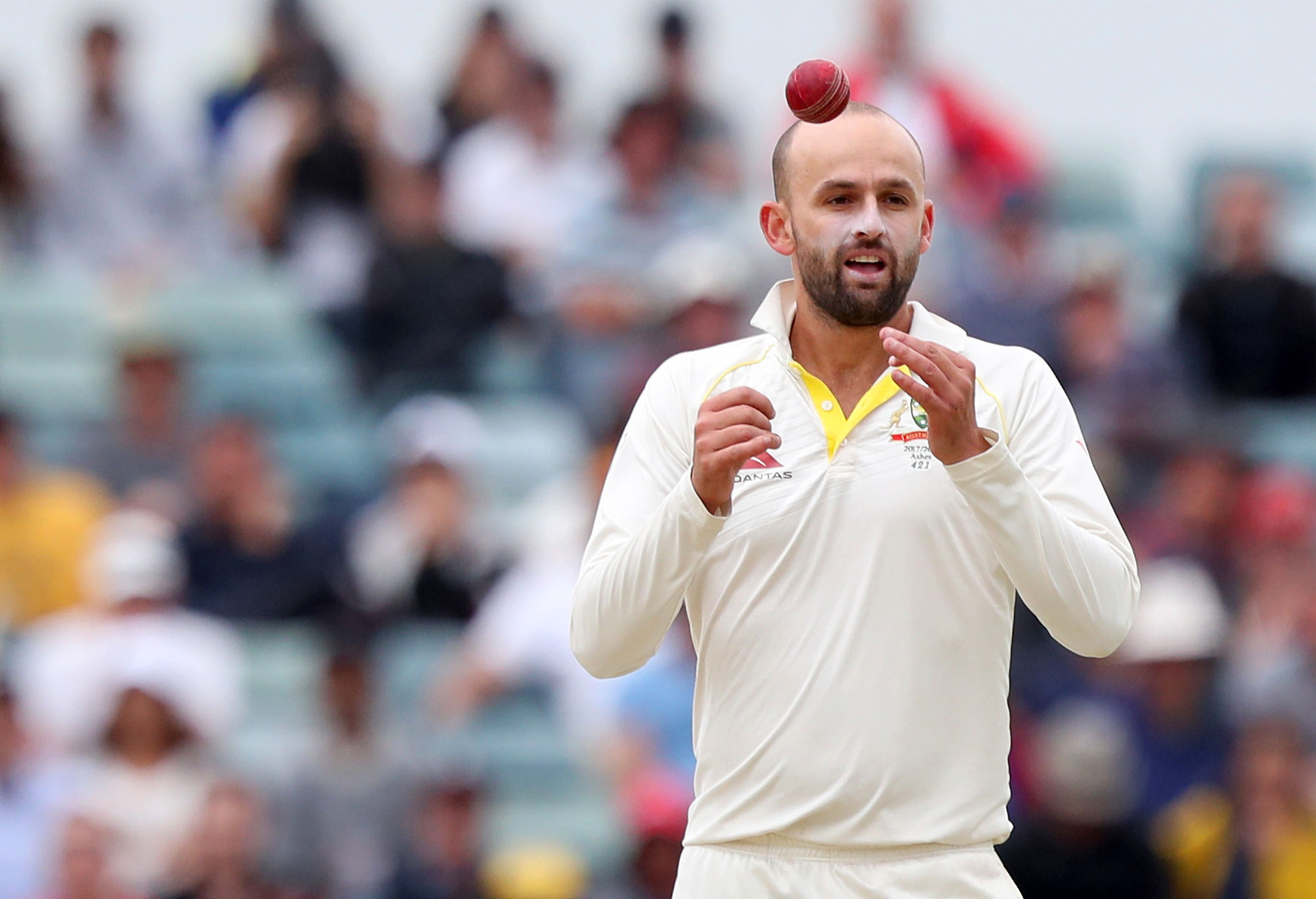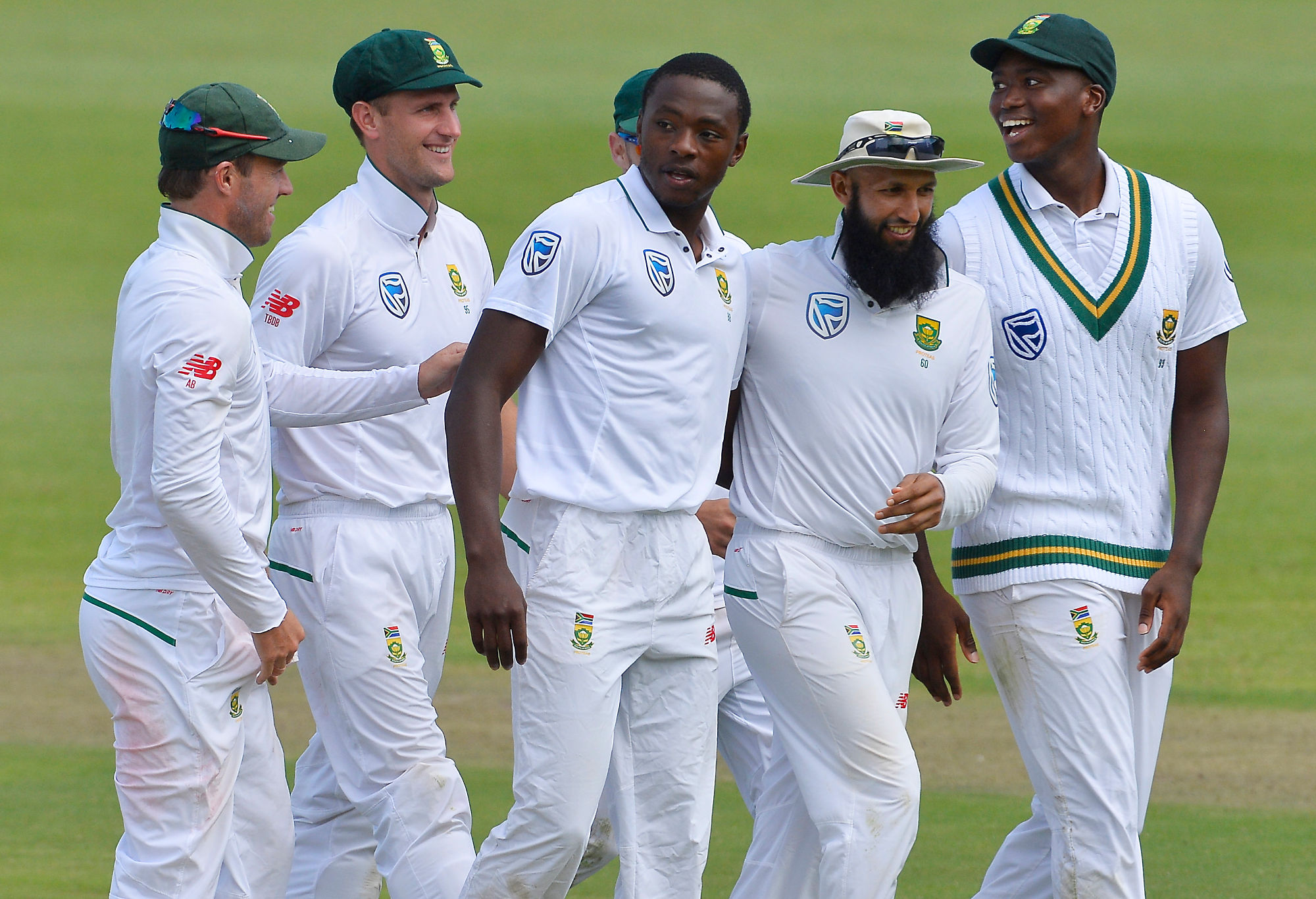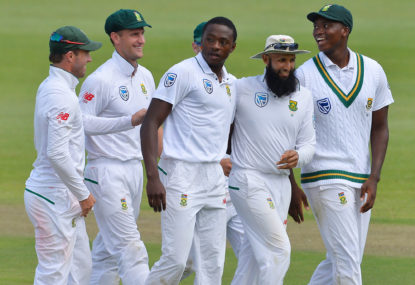South Africa levelled their four-Test series against Australia yesterday by recording a six-wicket win in Port Elizabeth. Here are three of the major talking points nine days’ ahead of the third Test in Cape Town.
Australia need a lift from Nathan Lyon
Leading into this Test series Lyon was the in-form Test spinner in the world, having taken 63 wickets at 23 last year, including five five-fors in 11 Tests. He had finally conquered Asia, bowling well in India and dominating in Bangladesh, and had then been a major factor in Australia’s 4-0 Ashes win.

(AAP Image/Richard Wainwright)
Lyon had seemingly earned the complete faith of his skipper Steve Smith, who routinely brought him on at key moments to try to conjure a wicket.
As much was evident in the first hour of South Africa’s first innings in this series, when Smith called upon Lyon after just seven overs.
SA had made a bright start and Australia’s new ball bowlers had been loose, so Smith asked Lyon to turn the tide. He did just that, dismissing quality batsmen Hashim Amla and Dean Elgar in his first over, and pushing the match firmly in Australia’s favour.
It was a stunning start to the series for Lyon, one which suggested he may well torment SA. But in Lyon’s following 69 overs, stretching to the start of yesterday’s play, he took 1-194.
Those figures are a touch unkind to the Aussie veteran, who delivered many good spells during that time. But the fact remains he has been clearly outperformed so far in this series by Proteas spinner Keshav Maharaj, who has snared 11 wickets.
The strength of Australia’s attack in recent times has been how well they’ve meshed as a group, earning each other wickets with their relentlessness. Lyon must lift if the Australian attack is to return to its menacing best.
Rabada could become the best Test quick of all time
Incredibly, at just 22 years old, the South African prodigy already has more 10-wicket hauls in his career than Glenn McGrath, who many people consider to be the greatest Test paceman in history.
Rabada’s 10-wicket haul yesterday was his fourth in Test cricket, and he’s still a year younger than McGrath was when the Australian made his Test debut.

Kagiso Rabada (Photo by Ashley Vlotman/Gallo Images/Getty Images)
But the most astonishing Rabada stat is his Test strike rate of 38.9, which is the second-best by any bowler in history to have taken more than 100 wickets. The only man ahead of him in that category finished his Test career 122 years ago – England’s George Lohmann.
In third place, after Rabada, is his Proteas teammate Dale Steyn, who is easily the best Test bowler of the past decade and ranks alongside the likes of McGrath, Malcolm Marshall, Wasim Akram, Curtly Ambrose, Dennis Lillee and Richard Hadlee as an all-time great.
Rabada’s career trajectory is so steep that, if he avoids major injury problems, he could potentially eclipse all of those legends. He is a phenomenally well-rounded quick for someone so young. There is not an attribute he doesn’t possess – pace, bounce, accuracy, swing, guile, stamina and strength.
Like all of the truly great fast bowlers in history, the state of the pitch doesn’t have a major influence on Rabada’s impact, he finds a way to either exploit favourable conditions or overcome unfavourable ones.
The Australian batsmen will be mightily relieved if he is banned from the last two Tests for repeated poor behaviour.
[latest_videos_strip category=”cricket” name=”Cricket”]
AB de Villiers has a huge amount of Test cricket left in him
De Villiers has been, by a big margin, the best batsman in this series so far. The 34-year-old’s ton in the first innings of this match was one of the best Test hundreds scored against Australia in the past decade.
In a match where most batsmen struggled for fluency, de Villiers cruised to 126no from 146 balls, with 21 boundaries.
The ease with which he countered the reverse swing of the Aussie quicks was incredible. It was the same story yesterday as de Villiers arrived at the crease with SA under heavy pressure at 2-32 and with his batting partner Amla struggling against both Lyon and his nemesis Josh Hazlewood.
De Villiers once more batted as if he was utterly unaffected by the circumstances, immediately turning the pressure back on to Australia by sprinting to 25 from 14 balls.
It remains to be seen just how much longer de Villiers will play Test cricket. Before this series he had played just four Tests in the prior two years, having sat out for a lengthy period for a variety of reasons.
Whether his body can withstand the rigours of several more years of being a full-time Test cricketer I cannot claim to know. But it is abundantly clear de Villiers remains one of the truly elite Test cricketers in the world, a man capable of bending even the best bowling attacks to his will.































































































